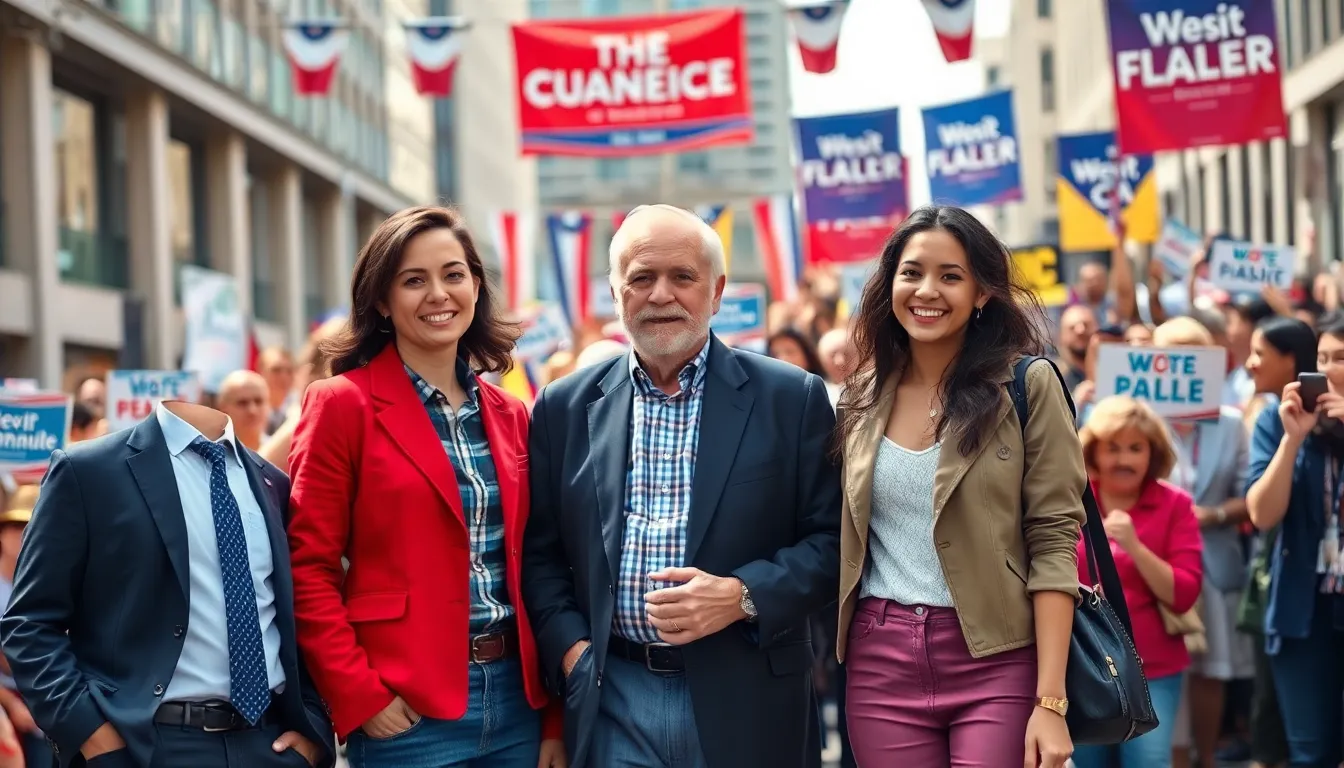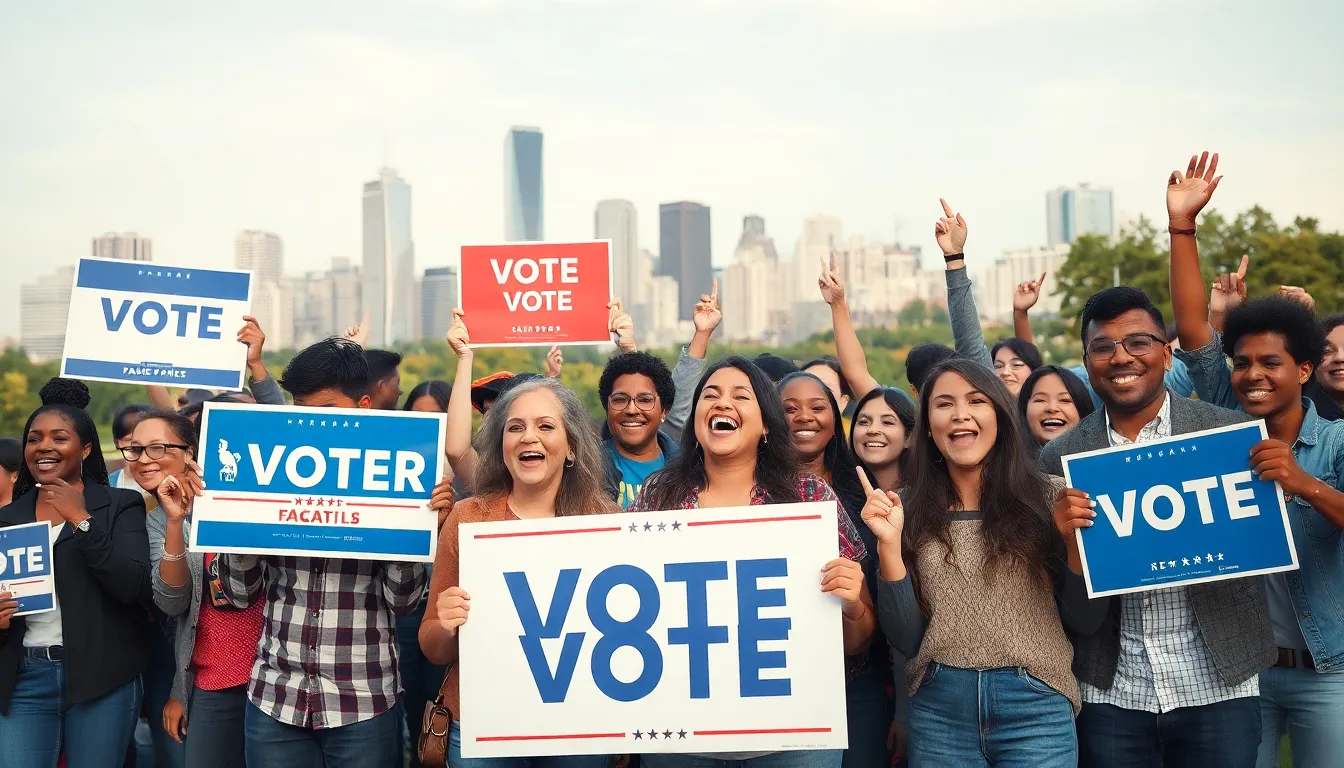As election season heats up, the polls are buzzing like a caffeinated bee. Voters are eager to know who’s leading the charge and who might be left in the dust. It’s not just numbers on a screen; these polls are the crystal balls of political fortunes, revealing how candidates stack up in the race for votes.
Table of Contents
ToggleCurrent Polling Overview
Current polling data reveals significant trends among candidates. Recent surveys indicate that Candidate A leads with 35% support, followed closely by Candidate B at 30%. Candidate C, however, has shown notable growth, climbing to 25% in the latest figures.
Changes in voter sentiment are evident, especially among undecided voters. Approximately 10% of respondents remain unsure of their choice, reflecting potential volatility in upcoming polls.
Regionally, Candidate A performs well in urban areas, while Candidate B resonates strongly with rural voters. Candidate C capitalizes on younger demographics, attracting interest from first-time voters.
Polling methods also vary, with some organizations utilizing online surveys while others rely on phone interviews. These methodologies can impact the results, making it essential to consider the source when interpreting data.
Overall, polling trends offer valuable insights into candidate standings and voter dynamics. Observations point to fluctuating preferences as the election approaches, emphasizing that these numbers provide a snapshot of current public opinion.
Staying informed on these developments can enhance understanding of the electoral landscape. As new data emerges, analysis will continue to reflect changes in candidate momentum leading into Election Day.
Major Political Figures

Key political figures are shaping the current electoral landscape. Their varying levels of support reflect distinct voter preferences and regional appeal.
Candidate Profiles
Candidate A leads with 35% support, primarily focusing on urban areas. This candidate’s policies resonate with city dwellers and young professionals. Candidate B holds 30% of the vote and finds favor among rural communities, emphasizing agricultural issues and traditional values. Candidate C, at 25%, has seen significant growth by appealing to first-time voters and younger demographics. Each candidate’s strengths highlight their influence on the electoral dynamics as supporters rally around their messages.
Polling Trends
Current polling data showcases notable trends among candidates. Candidate A’s urban dominance contrasts with Candidate B’s rural support, with Candidate C successfully attracting younger voters. Undecided voters, making up 10% of the electorate, may tilt the balance in future polls. Voter sentiment is shifting, indicating potential volatility as Election Day approaches. Polling methods, including both online surveys and phone interviews, can also influence voter responses and final tallies. This evolving landscape underscores the need for ongoing analysis of voter behavior and preferences.
Key Issues Influencing Polls
Polling trends show key issues influencing voter preferences. The economy and employment, along with healthcare and education, emerge as significant factors in today’s political landscape.
Economy and Employment
Voters prioritize economic stability and job opportunities in upcoming elections. Candidate A’s focus on urban development creates appeal among city dwellers seeking new jobs. Candidate B’s emphasis on agricultural growth resonates with rural citizens who value traditional industries. The rise in inflation has left many concerned, shifting undecided voters toward candidates addressing financial relief. Recent discussions about minimum wage increases capture attention, highlighting the need for actionable strategies. Employment rates remain critical, impacting public sentiment and voter decision-making.
Healthcare and Education
Healthcare reforms play a crucial role in shaping voter opinions. Candidate A advocates for affordable healthcare solutions, attracting younger voters who worry about costs. Candidate B defends traditional healthcare models, resonating with older generations prioritizing stability. Education reforms significantly influence family-oriented demographics, with Candidate C proposing innovative approaches to modernize schools. Discussions on student loan relief spark interest among young professionals, further energizing their support. With varying perspectives on healthcare and education, candidates must articulate clear policies to sway undecided voters.
Regional Analysis
Current polling trends indicate notable differences in candidate support across various regions. Candidates’ appeal varies significantly depending on voter demographics and local issues.
Swing States
Candidates A, B, and C exhibit fluctuating support in swing states, which often determine electoral outcomes. Candidate A captures attention with 35% backing, driven by urban-oriented policies. Conversely, Candidate B secures about 30%, appealing to rural voters and their focus on agriculture. Candidate C has climbed to 25% support, engaging younger voters with fresh perspectives. Approximately 10% of voters in these states remain undecided, leaving room for strategic campaigning as candidates approach Election Day.
Urban vs. Rural Voters
Urban voters overwhelmingly favor Candidate A due to a strong focus on city development and economic initiatives. Candidate B enjoys popularity among rural constituents, connecting through agricultural advocacy and traditional values. Candidate C’s approach resonates with younger voters in urban areas, promoting education reforms and job creation. Each candidate tailors their message to meet the distinct needs of these voter groups, highlighting their platforms for greater relevance. These regional dynamics illustrate the complex layers of voter preferences as the election approaches.
As the election season progresses the dynamics of voter preferences continue to shift. Candidate A’s urban focus Candidate B’s rural appeal and Candidate C’s connection with younger voters create a vibrant electoral landscape. With 10% of voters still undecided the potential for changes in support remains high.
Understanding these trends is crucial for candidates as they strategize to capture the attention of their target demographics. The ongoing analysis of polling data will provide valuable insights as Election Day approaches. Staying updated on these developments will help voters make informed decisions in this pivotal election.



